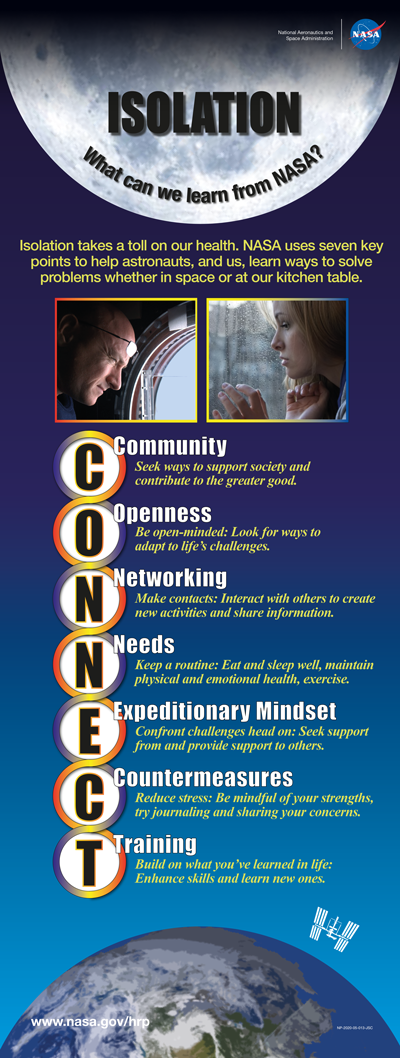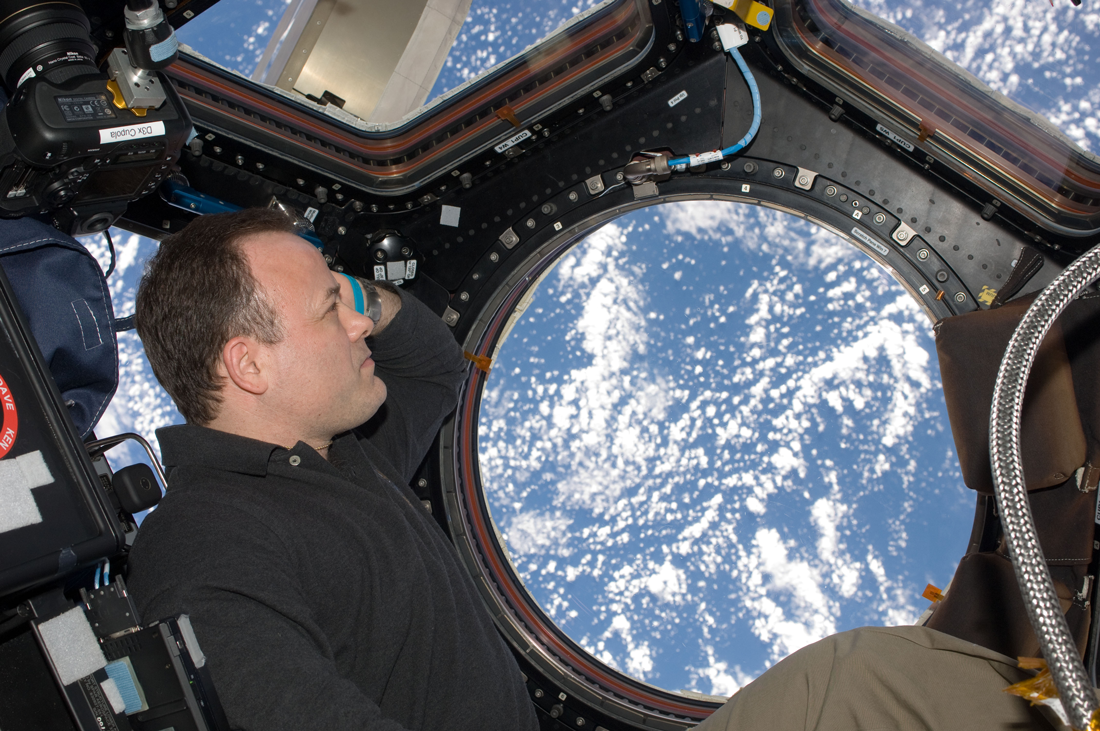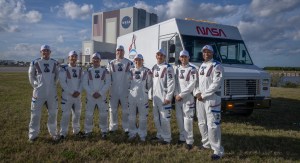Social isolation takes a toll on our health. Sometimes social isolation is necessary due to emergencies like a global pandemic, as is the case with the coronavirus that causes the COVID-19 disease. NASA astronauts also experience social isolation living on the International Space Station as they will during missions to the Moon and Mars.
Tom Williams, lead scientist for the Human Factors and Behavioral Performance Element of NASA’s Human Research Program, or HRP, developed the acronym C-O-N-N-E-C-T, described below. It represents seven key terms that are important in understanding good psychological health and helps astronauts cope with stress and difficult situations.
Community: One way astronauts endure isolation in space is knowing that their work has a social impact. “The Moon landing helped people around the world feel more united because they felt the sense of belonging, of oneness, with shared hopes and dreams fulfilled,” Williams said. Onboard the space station, astronauts participate in events to talk about human spaceflight, like the one-year mission studies, with various groups on Earth.

During a global pandemic, staying home is one way we contribute to our community. We could also do things like foster an animal from a shelter or make donations to charitable organizations. The idea is to find ways that support our world while in isolation and feel more linked together though our contributions.
Openness: “People who are open tend to be more resilient because they see more ways to approach a problem and adapt to life’s challenges,” Williams said. He added those who are more open are often more positive, helpful and flexible in their approaches to tasks. These qualities are strengthened in astronauts through exercises that train them how to respond and persist during emergencies. NASA researchers aim to improve team adaptation and resilience by identifying how teams adapt to certain challenges.
Being open helps us adapt to life’s changes. In isolation, we can find new ways to complete tasks, such as teleworking, virtual meetings and using home delivery services.
Networking: Family communication is important. Crews on space station make contact via video chat with friends and family to feel less separated from their loved ones on Earth. Private conferences with a NASA doctor or mental health provider are also available to crews. Care packages that include personal items, like family photos, magazines and a favorite snack help them feel linked to home. For distant journeys with greater communication delays, researchers are considering how virtual assistants could serve as part of an extended network.
If we, or a loved one, are socially isolated on Earth, we can interact in many ways for strength and support. We can communicate with video chats, organize drive-by parades to celebrate birthdays and have food delivered to other’s homes.
Needs: To stay physiologically, emotionally and psychologically fit in isolation, astronauts exercise, eat healthy, follow a sleep and work schedule, and make time for leisure activities. Tools like programmable lighting systems are being tested by HRP researchers to potentially improve the sleep quality of crews in isolation where it’s easy to lose track of time.
On Earth, we can commit to maintaining a healthy body and mind by exercising and eating well, keeping a routine and enjoying hobbies. Turning home lights down the hour before we go to bed also helps our mind and body prepare for sleep.
Expeditionary Mindset: “Self- and team care, cultural communication, group living and teamwork are essential expeditionary skills,” said James Picano, operational psychologist at NASA’s Johnson Space Center. “In training, astronauts practice skills in how to manage conflict, de-escalate situations, keep personal work areas clean and care for another crewmate.” HRP researchers are studying how cultural differences may impact astronauts on longer-duration missions to develop training tools for working with diverse crews.
We can demonstrate an expeditionary mindset in isolation on Earth by continuing to practice good hygiene, keeping our homes clean, respecting different viewpoints, and seeking and providing support. It also helps to realize that others have gone through or are experiencing the same challenges and we can learn from them.
Countermeasures: Another part of crew readiness and HRP research focuses on developing solutions that reduce the stress of isolation. Astronauts write in journals to express their feelings. Mindfulness and other coping strategies can help ease crew stress and psychologically reframe a situation to turn negatives into positives. HRP researchers are investigating other potential ways to counteract isolation stress, such as the benefits to the brain and body of physical activity and virtual reality interactions for long-duration missions.
In isolation, we can journal to help regulate our emotions and reduce stress, be mindful of our strengths and share concerns. Meditation can be practiced nearly anywhere. We can also recognize the positive aspects of social isolation, such as providing more time for family and creative activities.
Training and Preparation: “Astronauts prepare for the expectations of the environment,” Picano said. “On Earth, crews train in analog environments similar to the space station.” HRP researchers are studying how astronauts retain and transfer skills to identify information and guidance for more distant and longer missions.
The downtime of isolation is a good chance to reflect on our strengths and build upon them. We can build new skills with online programs or instructional videos and can draw upon lessons learned from our previous experiences as well as those of others when faced with new challenges.
You can learn more about NASA research to help astronauts deal with isolation, how isolation affects humans and potentially how to cope with adverse effects here.
____
NASA’s Human Research Program, or HRP, pursues the best methods and technologies to support safe, productive human space travel. Through science conducted in laboratories, ground-based analogs, and the International Space Station, HRP scrutinizes how spaceflight affects human bodies and behaviors. Such research drives HRP’s quest to innovate ways that keep astronauts healthy and mission-ready as space travel expands to the Moon, Mars, and beyond.
For a 508 Compliant PDF of the Infographic follow this link.

































